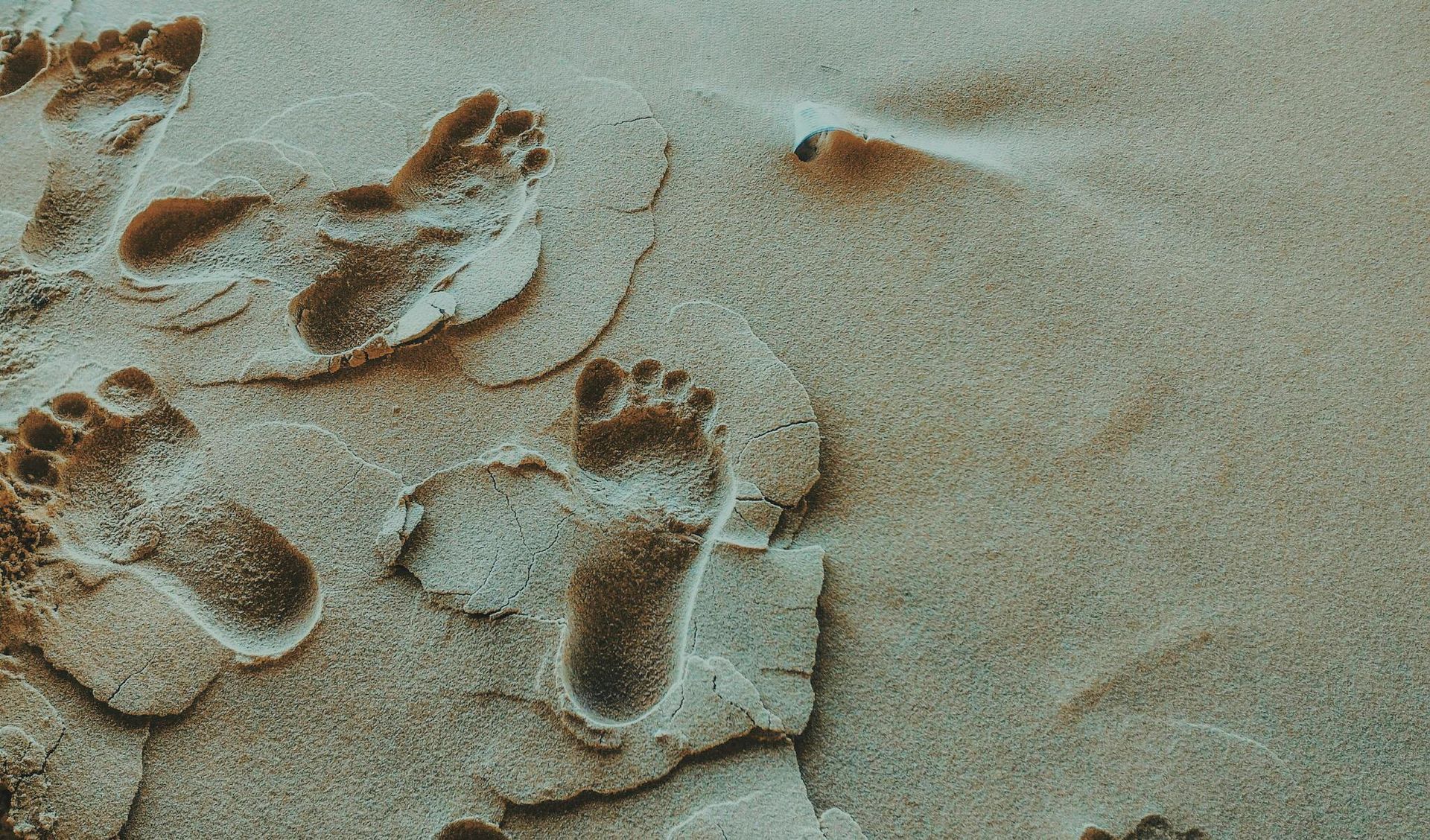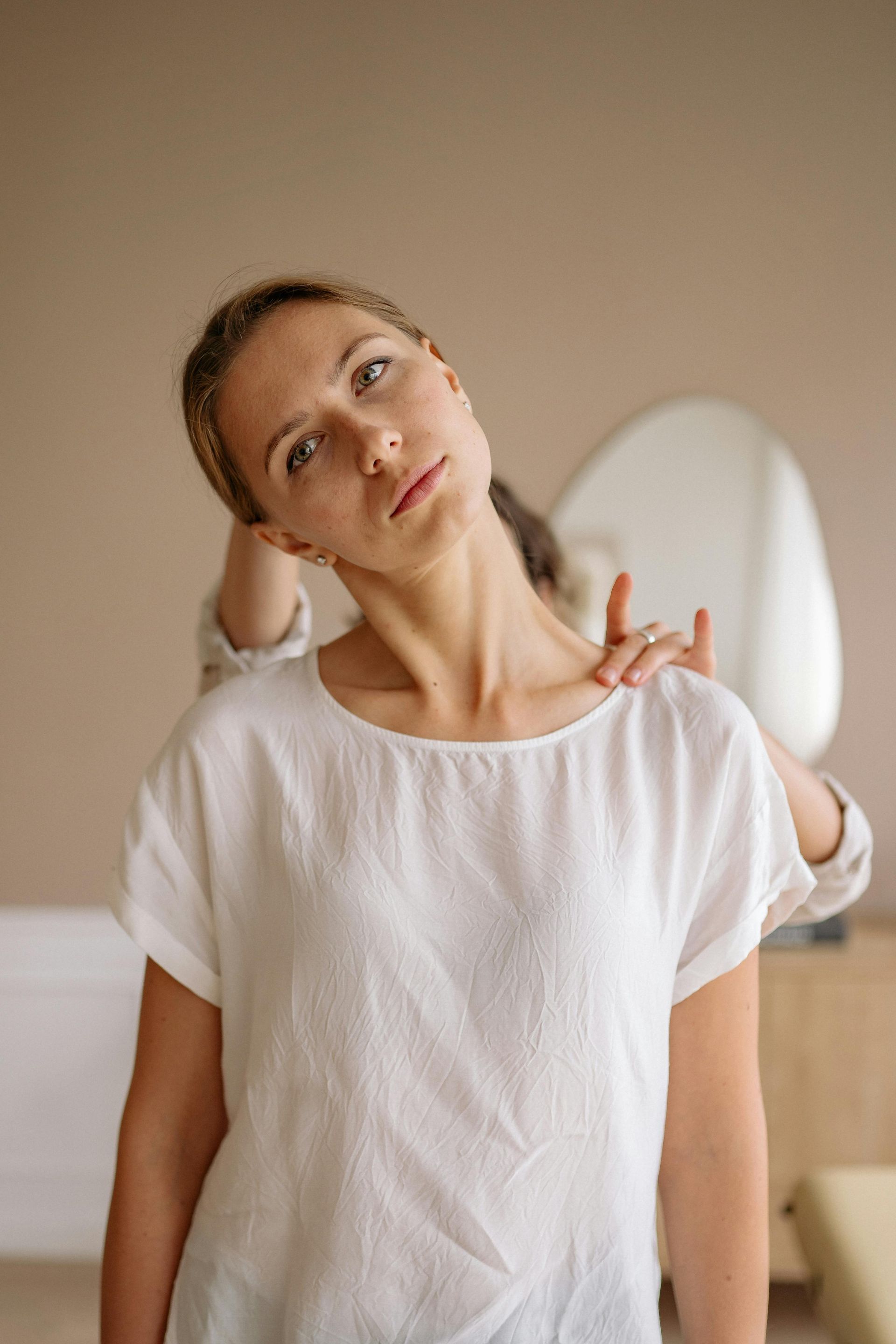Yoga for Beginners
:Everything You Need to Know to Start Your Practice
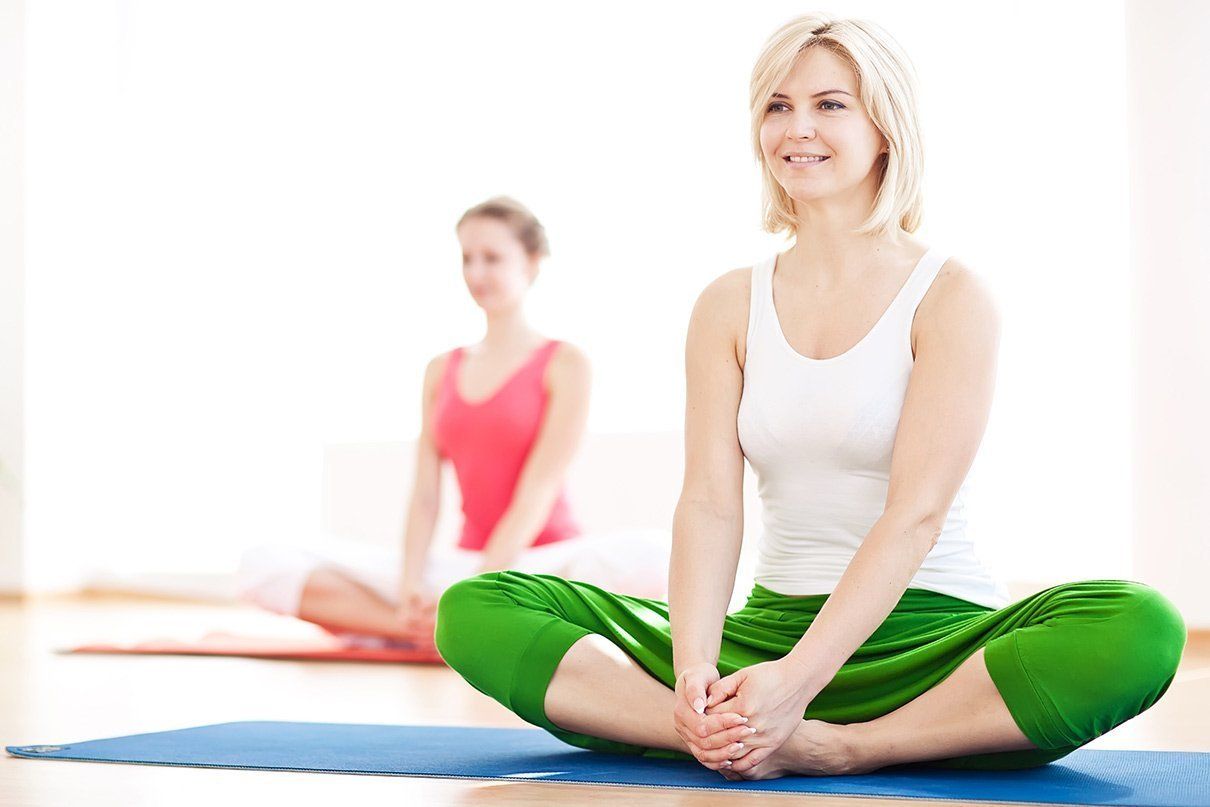
According to the Yogi Times, approximately 36 million Americans practice yoga on a regular basis. Starting a yoga practice can be a bit intimidating. However, with a little background knowledge, it is easy to start gaining the benefits of a regular yoga practice.
I found yoga while I was healing from an eating disorder. The practice was so helpful in my recovery and to my overall health that I quit my fulltime IT job to start teaching yoga. Today I teach a variety of yoga and fitness classes and work as an eating disorder recovery coach. Keep reading to learn everything you need to know to start your yoga practice, from someone who has moved from beginner yogi to experienced yoga instructor.
What is yoga?
Yoga is an ancient practice of the body and the mind. It was originally developed as a way to stretch the body so that monks could comfortably spend more time in meditation. The word "yoga" can be translated to mean to yoke or to unite. Yoga aims to unite the mind, body, and soul. Most westerners are familiar with hatha yoga, or the branch of yoga that deals with yoga. But yoga is so much more than that. It includes meditation practices, breathing exercises, study of self, giving back to others, and so much more.
People walk into a yoga class for many reasons. Some come to calm their nervous system while others want to stretch tight muscles. Many individuals find community at their local yoga studio. Yoga is a great form of self-care and healing that is accessible to all kinds of people.
Why should I practice yoga?
There are so many benefits to a regular yoga practice. Here are just a few:
Physical benefits
- Improved strength and flexibility
- Enhanced balance
- Reduced pain
- Improved cardiovascular function
- Better sleep
- Enhanced energy levels
- Improved posture
- Better body awareness
Psychological benefits
- Reduced stress
- Improved mood
- Connection with a supportive community
- Enhanced confidence in the way you move your body
- Learned tools for managing anxiety (breath work, gentle movement)
- Improved mental clarity
- Better focus
- Enhanced mind-body relationship
What styles of yoga are appropriate for a beginner?
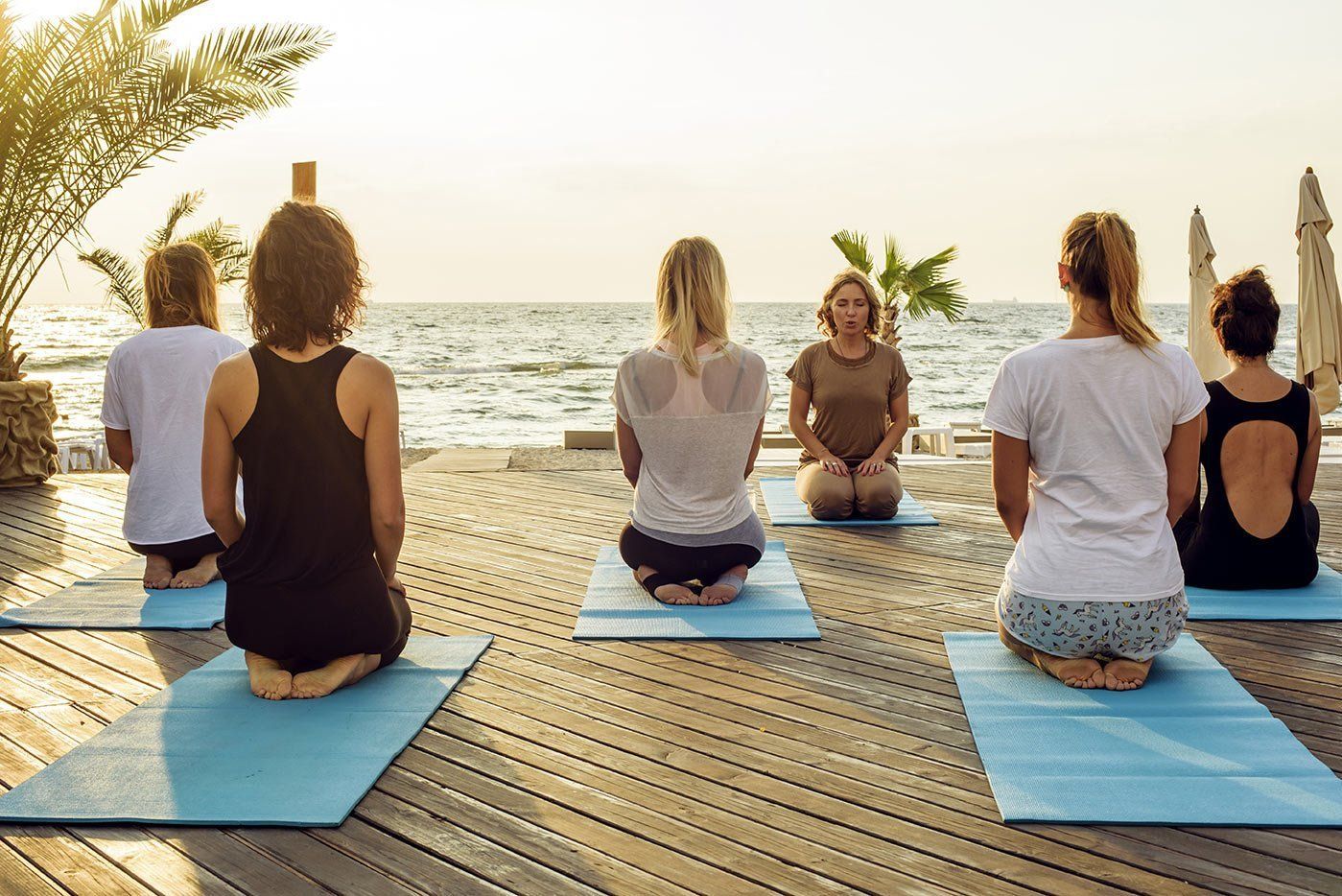
There are so many different styles of yoga that it's easy to find a format that works for you. But some formats are much more accessible to beginners than others. Here are my three favorite yoga formats to try as a beginner:
1. Yin yoga
Yin yoga is a style of yoga that uses long holds, supported by yoga props, to stretch the muscles and fascia (connective tissues) in a gentler way. Yin yoga is very accessible to beginners because it is a slower-moving format, which allows the yogi to learn the shapes over time. Yoga props such as blocks, blankets, and bolsters are used to support the body in each position (or shape), which can help a newer student comfortably explore different yoga postures.
In a yin yoga class, expect to practice six or seven poses, or "shapes" for several minutes each. In yin yoga, you are meant to feel the sensation of a stretch during each hold, but so much that it impacts how easily you can breathe. Your yoga teacher can help you find this balance between sensation and ease, called the "edge" in yoga.
2. Restorative yoga
Restorative yoga is similar to yin yoga in that it involves long holds and the use of yoga props. But restorative yogis work less with the idea of an edge. Most restorative yoga classes involve gentle twists, forward folds, and backbends to gently open up the body.
This format is another excellent entry into yoga, as it moves slowly enough for the practitioner to explore each shape and find the proper alignment for their body. Restorative poses are gentle enough for most bodies and are a great way to prepare for a more active yoga practice.
Vinyasa yoga
Vinyasa yoga is a style of hatha yoga that links breath to movement. This means that transitions from one pose (or asana) to another are coordinated with the inhale or exhale breath. Vinyasa is one of the most common classes found at a yoga studio and online and is often taught with yoga props. Vinyasa yoga teachers are well trained in working with all levels of yoga practitioners and should be able to offer newer yogis modifications for more advanced postures.
There are several different types of vinyasa yoga. Here are a few:
- Gentle yoga: This is a slower moving version that is great for someone beginning their practice. Poses are often broken down and build slowly to a gentle peak pose.
- Power yoga: This format feels more intense, with faster and more complicated asanas and transitions between each pose. Power yoga also typically builds to a peak pose or to a peak sequences of poses.
- Ashtanga yoga: Ashtanga yoga is an athletic practice that has different levels. This yoga style works with a set sequence of poses. This set sequence allows practitioners to gain familiarity with and master each yoga posture.
- Hot yoga: Hot yoga has recently become a popular form of yoga. This can either mean a heated power yoga class or a class that is similar to Bikram yoga. Bikram yoga and the hot yoga formats that are based from it consist of a set of postures that are practiced in a heated room. Much like ashtanga yoga, Bikram yoga is a more intense practice that allows the practitioner to master each pose.
If you start your practice at a yoga studio, I recommend trying as many formats and teachers as you can. This will help you identify which instructors and styles of yoga you most connect with.
Should I practice at a yoga studio or at home?
With today's technological advancements, yogis are free to practice at a yoga studio or at home via a yoga video. Identifying which is best for you might take some experimentation, but here are some notes for each.
Practicing yoga at a yoga studio
Starting your yoga practice at a studio has many advantages. Studios have a variety of yoga formats and instructors for you to try, and you will most likely find a good match by experimenting with a few different classes. Most yoga studios have a supply of yoga mats and props, so you can borrow theirs rather than investing in your own. Additionally, yoga teachers are trained to help students find the best physical alignment for each shape. They are available to you as resources to ensure that your practice is safe for your body and to prevent physical injury. Many yogis find that practicing yoga in a studio setting holds the accountable to their practice, plus it helps them build a community of like-minded friends.
Practicing yoga with a yoga video
The convenience of practicing yoga at home with pre-recorded videos might mean that you build a daily practice more easily. Practicing with a video can be a less expensive option than investing in a membership or class package at a local studio. And it allows you the privacy of practicing in your own space. A home practice also gives you the option of playing the same video over and over to help your body get used to each sequence.
If you do decide to practice at home, you'll likely need to invest in your own yoga mat and props (more on that to come). But you'll likely save money in the long run, as lots of yoga teachers offer free pre-recorded classes. Here are two free practices that I have created that are great for beginners:
- Grounding yin yoga practice: This 30-minute yin yoga sequence will help you calm your nervous system and reduce stress. All you need is your yoga mat and a folded blanket.
- Twisty vinyasa flow: Twists are fun to practice and are great for digestive health. You might want to incorporate a yoga block into this 25-minute practice.
Practicing yoga privately with an instructor
Private yoga has the benefits of practicing with an instructor with the added convenience of practicing at home. A private yoga class will be a larger investment than practicing with a video or at the studio, but it is a great way to learn and progress in your yoga practice.
Your instructor will customize each sequence to meet your needs and goals. He or she will help you find the appropriate modifications for each pose and help you with your props. A talented instructor will offer a complete yoga workout, including breathing techniques, that tailored for your body. Practicing privately with an instructor is a great way to ensure that you are practicing in a way that is safe for your body, and that the practice is balanced to meet your individual needs.
There are lots of ways to find a private yoga instructor:
- Many studio teachers also offer private yoga, so if you find a teacher you connect with, ask them!
- Yoga Alliance has a database of registered yoga instructors who have been certified through their board. You can search the database to find an instructor near you here.
- I personally offer in-person and virtual private yoga classes. If you are interested in finding out more about my offering, you can email me or check out my Yoga page.
What should I wear to a yoga class?
Stepping into a yoga studio, you might see yogis clad in expensive yoga clothes. However, you don't need to invest a lot of money into yoga clothes. Anything that you can comfortably move in works. If you don't feel comfortable in yoga pants, try sweatpants or pajama pants. A t-shirt or tank top should work, but you might want something you can tuck into your pants during inverted poses such as downward facing dog.
You might want to bring some layers to your yoga class. You might feel chilly during supine poses and in your corpse pose meditation at the end. However, you will likely warm up during standing poses and want to remove a layer.
Yoga is traditionally practiced without shoes and socks, and most yoga studios will request that you remove your shoes outside the studio room. You'll want to remove any belts, baseball caps, or other accessories that might get in the way of movement.
What props do I need for my practice?
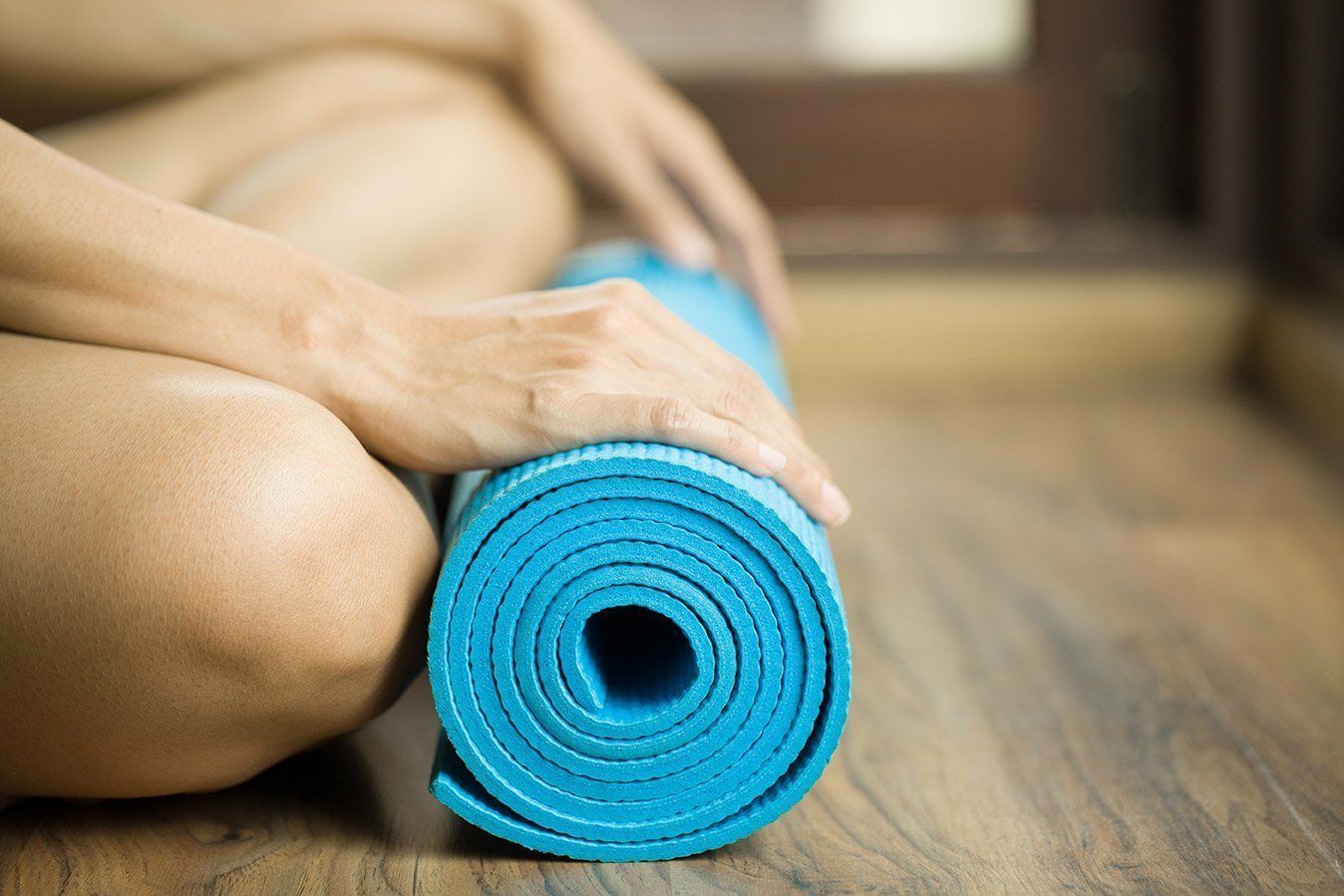
Although all you really need for your yoga practice is instruction and a quiet space to practice, adding a few basic props to your yoga supply will make your entry into yoga much easier. Here are the things I recommend you start with:
- A good yoga mat: Your yoga mat provides the service for your practice. A good yoga mat allows you to hold shapes such as tabletop and downward facing dog without your hands or feet slipping on the surface. It is also thick enough to support your joints as you transition from shape to shape. There are so many yoga mats to choose from, and if you're anything like me, you will upgrade your yoga mat as you advance in your practice. So to begin, I'd recommend a less expensive mat that is at least 5mm thick.
- A blanket: Yogis will often use a folded blanket to support their hips in a seated forward bend, to pad their knees in a lunge, or for warmth during savasana.
- Yoga blocks: Yoga blocks help bring the ground a few inches closer to you. This can allow you to ease into a bigger stretch such as half splits or runners lunge. They offer firm support in longer yin and restorative holds such as reclined bound angle pose. Also, squeezing a block between your thighs in bridge or chair pose helps to engage your core and reduce the chance of injury.
- A yoga strap: Much like how blocks bring the ground closer to you, yoga straps lengthen your arms. If you are unable to reach your toes in a seated forward bend, try looping a yoga strap over the ball of your feet and pulling the strap to exaggerate the stretch.
Beginner yoga poses to know
There are so many physical yoga postures that it can feel overwhelming trying to learn them all as a beginner. But there are several common yoga poses that make their way into most practices. Before diving into these common asanas, let's first look at the different types of yoga poses.
Types of yoga poses
Depending on the style of yoga class you are taking, you will likely be asked to move through several different types of poses, meant to work the body in different ways. Here are the different types as well as the intentions for each:
- Seated poses: Seated stretches are often cooling shapes that work to stretch the hamstrings and hips. Try placing a folded blanket or block underneath your hips during seated forward folds.
- Standing poses: Standing postures are meant to build heat during a more active yoga practice. They are often strung together during a vinyasa class to form breath to movement flows.
- Reclined poses: Yoga also incorporates poses that are practiced prone or supine. These cooling, relaxing shapes work with gravity to gently stretch the body. You will find mostly reclined and seated shapes in a traditional yin or restorative practice, and also at the beginning and end of a vinyasa yoga practice.
- Balancing poses: Balancing poses are meant to build core strength and confidence in balancing. Beginners often start by balancing on one foot and will then progress to more advanced arm balances and inversions.
For each of these types of poses, there are several different movement styles you can take. Here is a brief overview of each style with its benefits:
- Twists: Twists are cleansing shapes that reset your spine while stretching your outer hips and shoulders. Twists can feel playful to the practitioner, and they can help improve digestive system health.
- Backbends: Backbends help to stretch your chest and shoulders and are a great counter-stretch to seated activities such as work, driving, and watching TV. Backbends can help soothe lower back pain and release negative energy.
- Forward bends: Forward bends are great for stretching the spine, hamstrings, and hips. These grounding poses can help calm the nervous system and promote better sleep.
- Hip openers: Hip openers are meant to stretch your hips and glutes. These shapes are great for relieving back pain and can also provide a gentle emotional release.
- Side bends: Side stretches are great for opening the sides of your ribcage and can allow for deeper twists. Stretching your side body can help to improve your lung capacity.
Here are six yoga poses that I recommend every beginner get familiar with. Gaining a fundamental understanding of these asanas will make you feel more comfortable in your first yoga class:
Mountain pose
Mountain pose is the base for all standing yoga poses. Stand with your feet hip width distance and press the ground away with your feet. Engage your legs and squeeze your thighs towards one another. Hug your navel in and stand tall.
Tabletop with cat and cow
Stretching your spine from a tabletop position is a popular way to warm up the body in a yoga practice. Simply come to all fours, placing your shoulders over your wrists and your hips over your knees. For cow pose, with an inhale breath create a U shape through your spine by dropping your torso towards the mat and lifting your gaze and tailbone. This creates a nice stretch up the front lines of your body.
For cat pose, arch your spine and turn your gaze inwards towards your thighs as you exhale. Cat stretches your back, glutes, and hamstrings, opening the back lines of your body.
Now alternate between the two with your breath to gently stretch your spine, shoulders, and hips.
Downward facing dog
Down dog is likely the most well-known yoga pose. From tabletop, walk your hands a little forward, tuck your toes under and lift your hips up and back. Bend your knees a little bit and use your hands to press your hips up and back until you feel a nice stretch in your hamstrings and calves. You can press your heels low towards your yoga mat to intensify the calf stretch or to bend one knee and then the other to ease into it.
Child's pose
Child's pose is another popular yoga pose. This calming pose opens up your hips and shoulders while stretching your spine. From tabletop, bring your feet together and your knees wider than your torso. Press your hips back towards your heels and reach your arms forward as you melt your heart towards your yoga mat.
Child's pose is a great pose to take if you ever need to rest in a more active practice. It is also a great way to ground when you are feeling anxious or overwhelmed. Try massaging your third eye on your yoga mat by swaying your head side to side for enhanced relaxation.
Happy baby
Happy baby is a supine hip and hamstring stretch that often used at the beginning or end of a yoga practice. Lie on your back and hug your knees into your chest. With your knees bent, bring them wider than your torso and reach up for your knee creases, ankles, or feet. Pull your legs in towards the ground a bit as your kick away from yourself to find the best stretch in this shape. It can also feel good to sway side to side in this shape to explore the stretch and massage out your back.
Corpse pose
Corpse pose, or savasana, is the last asana taken in a yoga practice. Traditionally, it is taken lying flat on your back. However, you may bring a blanket underneath your knees or head for comfort. Holding stillness in corpse pose challenges us to calm the mind, and allows us to take in the benefits of our practice.
Want to learn more?
If you are interested in learning more about how to start a beginner yoga practice, feel free to scroll over to the Yoga section of my webpage for more information. You can also check out my blog that discusses how yoga can help you achieve better sleep. I have a YouTube channel full of gentle yoga practices, meditations, and breathing exercises for you to explore.
And if you are interested in private instruction, please reach out to discuss your needs. I love customizing sequences to help my clients meet their goals.
On the Blog
